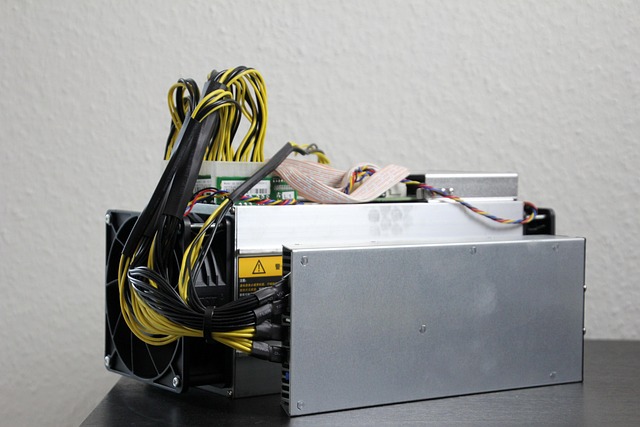Fastest Crypto Transactions Per Second in 2025: An In-Depth Analysis
Author: Jameson Richman Expert
Published On: 2025-08-04
Prepared by Jameson Richman and our team of experts with over a decade of experience in cryptocurrency and digital asset analysis. Learn more about us.
In the rapidly evolving landscape of cryptocurrencies, transaction speed remains a fundamental metric that influences user experience, network scalability, and broader adoption. Achieving higher transactions per second (TPS) is not merely a technical challenge but a critical factor that determines whether blockchain networks can effectively replace traditional financial systems and support mainstream adoption by 2025. As blockchain technology advances, numerous projects are innovating by leveraging cutting-edge consensus mechanisms, layer solutions, and cross-chain interoperability to realize faster, more scalable transactions. This comprehensive analysis explores the current state of fastest crypto transactions per second, including detailed data points, benchmarks, technological innovations, and future projections. It serves as a robust resource for database integration, investor insights, developer strategies, and user expectations.

Understanding the Significance of TPS in Cryptocurrency Ecosystems
Transaction speed, measured in transactions per second (TPS), is a core performance indicator in blockchain networks that directly affects usability, throughput, and economic viability. Higher TPS reduces confirmation times, alleviates network congestion, and lowers transaction fees—factors essential for microtransactions, decentralized finance (DeFi), enterprise integrations, and IoT applications. For instance, Bitcoin’s original TPS was approximately 7, leading to scalability bottlenecks that spurred innovations like the Lightning Network—an off-chain solution facilitating near-instantaneous payments. Ethereum, with a current TPS around 15–30, is actively implementing scaling solutions like sharding, Layer 2 rollups, and consensus upgrades to support complex dApps and high-frequency trading. High TPS is increasingly vital for real-time applications such as decentralized exchanges (DEXs), blockchain gaming, and IoT ecosystems, which demand instant transaction validation for seamless operation.
Leading Blockchain Networks in 2025: Speed and Scalability
By 2025, several blockchain platforms have distinguished themselves through their exceptional transaction speeds and innovative architectures. These networks set benchmarks for high throughput, low latency, and scalability, often surpassing traditional financial payment systems:
- Solana: With proven capacity to exceed 65,000 TPS in live environments, Solana combines Proof of History (PoH) with Tower BFT consensus, creating a synchronized, time-ordered ledger that supports sub-second block times (~400 ms). Its architecture is optimized for high-frequency trading, real-time gaming, and DeFi protocols, with stress tests demonstrating over 400,000 TPS under certain conditions. Ongoing protocol upgrades aim to push throughput even higher, potentially into the hundreds of thousands TPS.
- Avalanche: Supporting thousands of TPS with near-instant finality (~1 second), Avalanche utilizes a novel Avalanche Consensus protocol based on repeated random subsampling, providing high scalability and security. Its subnet architecture enables customized chains tailored for enterprise, DeFi, and IoT use cases, with projections indicating potential scalability to over 10,000 TPS as subnet deployment expands.
- Binance Smart Chain (BSC): Offering approximately 1,000 TPS with a 3-second block time, BSC employs Delegated Proof of Stake (DPoS) consensus. Its compatibility with Ethereum Virtual Machine (EVM) has fostered a vibrant ecosystem of DeFi, NFTs, and gaming dApps. With ongoing validator rotations and network upgrades, BSC aims to sustain high throughput, estimating current practical TPS around 1,000–2,000.
Innovations in Scalability: Layer 1 and Layer 2 Solutions
Scaling solutions are instrumental in expanding TPS capabilities while preserving security and decentralization. They are typically categorized into Layer 1 improvements—modifications to the base protocol—and Layer 2 protocols that operate atop the main chain:
Layer 1 Improvements
- Sharding: Ethereum 2.0’s implementation of sharding divides the blockchain into multiple parallel shards, each capable of processing transactions independently. As of 2025, Ethereum aims to support over 100,000 TPS through the combined effect of sharding and proof-of-stake (PoS). Other projects like Zilliqa and NEAR Protocol also utilize sharding to achieve several thousand TPS. Sharding reduces load per node and enhances scalability, but introduces complexities such as cross-shard communication and security considerations that are actively being addressed.
- Advanced Consensus Mechanisms: Transitioning from energy-intensive proof-of-work (PoW) to more efficient protocols like PoS, Delegated Proof of Stake (DPoS), and Byzantine Fault Tolerance (BFT) variants increases throughput and reduces latency. For example, Solana’s Proof of History (PoH) combined with Tower BFT provides a synchronized clocking system, enabling thousands of TPS, while Avalanche’s Snow protocols optimize for both speed and security, supporting high concurrency and finality.
Layer 2 Technologies
- Rollups: Both Optimistic Rollups and Zero-Knowledge (ZK) Rollups aggregate multiple off-chain transactions into a single cryptographic proof, which is then submitted to the main chain. ZK-Rollups are particularly promising, supporting over 2,000 TPS on Ethereum with future cryptographic advancements anticipated to increase this further. Rollups significantly reduce on-chain load and transaction costs while maintaining security guarantees via cryptography.
- State Channels and Sidechains: State channels (e.g., Lightning Network for Bitcoin, Raiden Network for Ethereum) facilitate near-instant, off-chain micropayments, with only periodic settlement on the main chain. Sidechains enable parallel processing of transactions, reducing main chain congestion. Both solutions are vital for microtransactions, gaming, IoT, and other high-speed, low-fee use cases.

DAG-Based Architectures and Their Role in Achieving Instantaneous Transactions
Directed Acyclic Graph (DAG) architectures eliminate traditional block structures, enabling highly parallel and asynchronous transaction processing, which drastically enhances TPS and reduces confirmation latency:
- IOTA: Designed for IoT microtransactions, IOTA’s Tangle employs a DAG where each new transaction validates two previous ones, enabling feeless, feel-quick transactions. In high-throughput scenarios, IOTA supports thousands of TPS, making it ideal for machine-to-machine communications, smart cities, and supply chain applications.
- Hedera Hashgraph: Utilizing Hashgraph consensus, Hedera achieves high throughput (~10,000 TPS), with asynchronous Byzantine Fault Tolerance (aBFT) ensuring security and fairness. Its architecture supports enterprise-grade applications such as real-time voting, supply chain transparency, and secure bidding, all demanding rapid finality.
Interoperability and Cross-Chain Solutions
As blockchain ecosystems diversify, interoperability becomes essential for high-speed, seamless asset transfers and data sharing across chains:
- Polkadot: Facilitates high-speed cross-chain communication via its relay chain and parachains, enabling parallel transaction processing across multiple chains. Its architecture supports hundreds of parachains, each optimized for specific tasks, creating a scalable multichain ecosystem with aggregate TPS potentially exceeding hundreds of thousands as deployment matures.
- Cosmos: Employs the Inter-Blockchain Communication (IBC) protocol to connect independent blockchains, allowing fast, secure asset transfers. Its hub-and-spoke model supports high throughput and ecosystem growth, enabling thousands of TPS across interconnected DeFi and enterprise chains.
Challenges and Future Outlook
Despite impressive progress, several challenges could influence the trajectory of TPS development:
- Decentralization vs. Scalability: Increasing TPS often involves trade-offs with decentralization. Networks with fewer validators or higher validation stakes might achieve higher throughput but risk centralization, threatening security. Balancing speed and decentralization remains a core challenge.
- Energy Consumption and Sustainability: Proof-of-Work (PoW) networks face sustainability issues, prompting a shift toward energy-efficient consensus mechanisms like PoS, DPoS, and DAG-based models. Industry-wide transition efforts aim to reduce environmental impact while maintaining performance.
- Security Risks: Layer 2 solutions such as rollups and sharding introduce new attack vectors, including data availability and consensus vulnerabilities. Continuous cryptographic research, security audits, and protocol refinements are vital to mitigate these risks and ensure robust, secure high-speed networks.

Conclusion: The Road to 2025 and Beyond
By 2025, the quest for the fastest crypto transactions per second will be driven by breakthroughs in consensus algorithms, Layer 2 scaling solutions, DAG architectures, and cross-chain interoperability. These innovations aim to support microtransactions, real-time payments, and complex DeFi operations at unprecedented scales. Data projections indicate networks like Solana, Avalanche, Hedera, and emerging DAG projects could exceed 100,000 TPS, fundamentally transforming global finance and digital interactions. For investors, developers, and institutions, tracking detailed benchmarks, real-world performance metrics, and security standards will be key to identifying promising opportunities. As these technologies mature, a scalable, decentralized, and efficient digital economy becomes increasingly attainable, heralding a new era of fast, secure, and low-cost digital transactions worldwide.